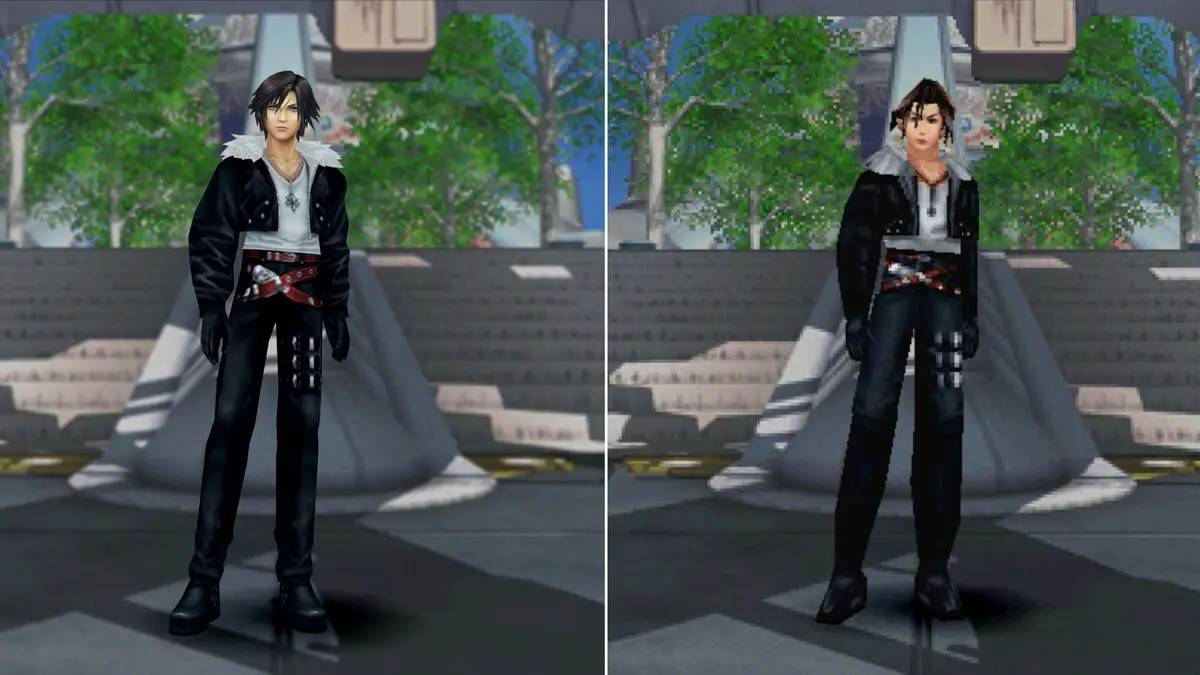Since its initial release in Japan in 1999, there have been 4 additional releases of Final Fantasy VIII on both the PlayStation and beyond. As one might expect, the first to arrive are the localized versions of the game for NTSC and PAL consoles, with the PS1 Greatest Hits version following shortly thereafter. Around the same time as the release of the Greatest Hits version, Final Fantasy VIII made its first arrival on Windows PC, and then later on Valve’s Steam launcher for PC gaming. The most recent and definitive release of the game is 2019’s Final Fantasy VIII Remastered, which significantly polishes up the game’s visuals while also adding in some quality of life enhancements and translation fixes.
Across all versions of Final Fantasy VIII are subtle differences that help to differentiate each release as its own entity. Most of these differences boil down to specific changes that Square makes across each subsequent re-release to further sharpen the game’s edges. The 2019 remaster is a vast improvement over the original PS1 version and arguably the best version of Final Fantasy VIII available today. These are all the versions of Final Fantasy VIII to ever release.
Final Fantasy VIII – Original Japanese Release
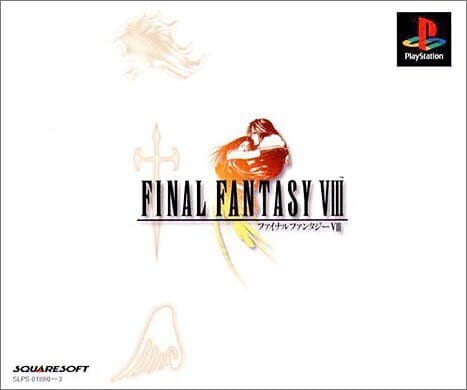
The first release of Final Fantasy VIII comes courtesy of its Japanese launch on February 11, 1999. This is the original version of the game with zero alterations made to its code or dialogue, and it has some subtle differences from its localization. For instance, the Japanese version uses different button commands such as Circle to confirm, Triangle to enter the menu, and X to cancel or back out of a menu.
Additionally, the original release lacks several of the helpful menu and inventory management options that were added in for the localized release in North America and Europe. There are also some key safeguards that exist in the North American and European versions that are not present in the original Japanese release, such as Quistis simply reminding Squall to check the Study Panel if Shiva and Quezacotl are not in his possession rather than just giving the two Guardian Forces to him.
Final Fantasy VIII – NTSC and PAL Localized Release
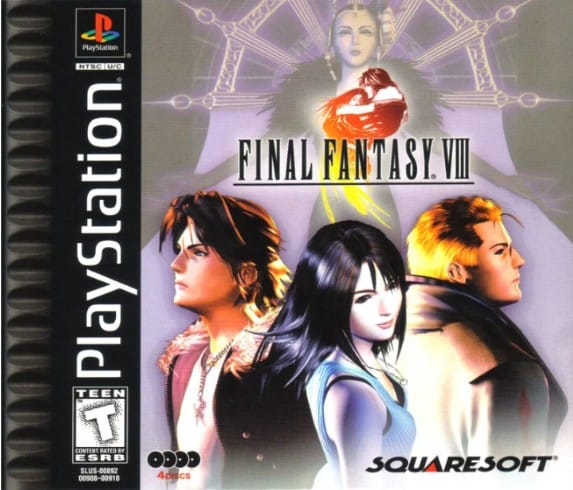
Final Fantasy VIII was released on September 7, 1999 in North America and then just a few weeks later in Europe (NTSC and PAL regions). Interestingly, there are some key differences between the Western and Japanese versions of the game, most notably the ways that the localized release has some helpful hints and menu options not available to Japanese players. Here are some of the more important differences between the Western and Japanese releases of the game:
- The NTSC and PAL release uses visual icons for the different elemental magics and different icons for the Guardian Forces.
- In addition to featuring more tutorials to help players acclimate to the game’s systems, these tutorials also trigger automatically at certain sections of the Western release of Final Fantasy VIII.
- Players have the option to sort magic spells by type.
- The Western release of Final Fantasy VIII includes the ability for players to directly swap all Junctions between party members using the “Switch” option of the main menu.
- The SeeD exam is complete and the timer extinguishes after defeating Ifrit in the Fire Cavern, rather than also having to return to the entrance.
- All of the missable Guardian Force summons are now obtainable from the bosses in Ultimecia’s Castle.
- Certain Guardian Forces have more abilities already unlocked by default when players obtain them.
Ultimately, as is the case with other games in the Final Fantasy series, the Western releases of VIII make the game easier for newcomers or inexperienced players in comparison to its original Japanese version. The Greatest Hits release of the game for the PS1 also makes one additional change by correcting a type present in the description of Bahamut’s attack in the original NTSC version.
Final Fantasy VIII – Windows PC Release
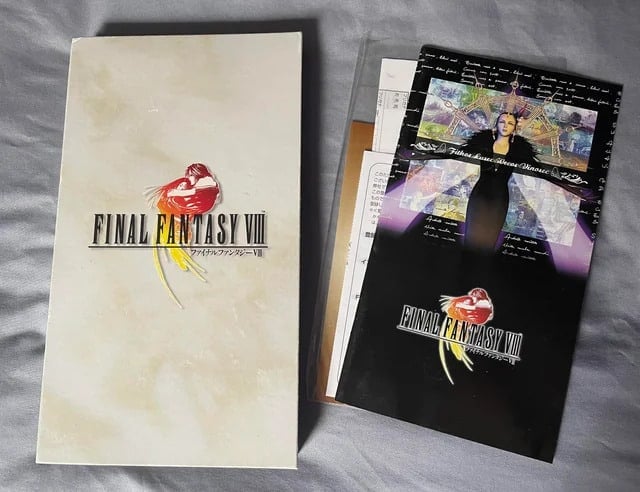
The Windows PC release of Final Fantasy VIII arrived a year after the game’s launch on the PlayStation in January 2000. As one would expect, the PC release features some significant changes to the game’s visuals and performance that still carry over into the release of Final Fantasy VIII Remastered. The version of the game in the photo above displays the Japan-only collector’s edition PC release, which features collectible packaging, discs featuring artwork of some of the main characters, and a commemorative instruction manual/guidebook. Other regions also received their own collector’s edition releases of the game for PC. In terms of its differences over the PlayStation version, these are the key alterations to the PC version:
- Improvements to the quality and resolution of the character and Guardian Force models in-game and the Guardian Force portraits in menus.
- The Full-Motion Video cutscenes now run in a resolution of 480p.
- The PC version uses a new font/typeface in dialogue and menu text.
- Improvements to the game’s performance allow for faster loading and transitions between the overworld map and towns/dungeons.
- The Chocobo World game (previously exclusive to PlayStation users with access to a PocketStation) is playable on PC.
- The User-Interface runs at a sluggish 15FPS, making actions like boosting Guardian Forces or inputting Limit Breaks much more difficult.
- The Omega Weapon super-boss now scales to the party’s level rather than remaining stationary at Lvl 100.
Final Fantasy VIII – Steam Version
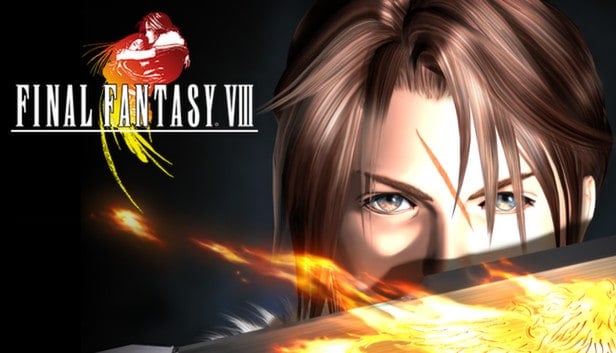
The original PC release of Final Fantasy VIII‘s lack of optimization resulted in a game that looks and performs better than the PS1 version in most aspects, but significantly suffers in others. The Steam release in 2013 fixes all of these issues to be the longtime best version of the game easily available prior to the release of Final Fantasy VIII remastered. The Steam launcher adds various features that one would expect like cloud saves and achievements, but it also uses a better optimized version of Final Fantasy VIII that runs better and allows for higher-resolution display. The key improvements that the Steam release makes are:
- The Steam launcher version supports Windows XP and newer, while support for the original PC release is restricted to Windows 95 or 98.
- Players can completely remap and customize controls for all sections of the game, including any of the various mini-games with their own control schemes.
- The Steam release features the Magic Booster function, which instantly provides players with 100 copies of a variety of spells, including Cure, Cura, Thundara, and Aero, among others.
- The game now supports resolutions up to 1920×1080.
- Full-Motion Video (FMV) cutscenes are re-coded and now run at 720p.
- The Steam version also adds several helpful gameplay “boosts” or cheats that disable achievements when used.
– High Speed Mode increases in-game speed by 5x.
– Battle Assistance keeps the party’s ATB and Limit Break Gauges full, and provides full HP to each party member
– 9999 makes all attacks deal maximum damage in battles.
– AP MAX provides max AP to all Guardian Forces, unlocking all of their abilities.
– Magic and Gil MAX sets all spells in the inventory to the value of 100 and sets the amount of Gil to the maximum numerical limit.
Final Fantasy VIII Remastered
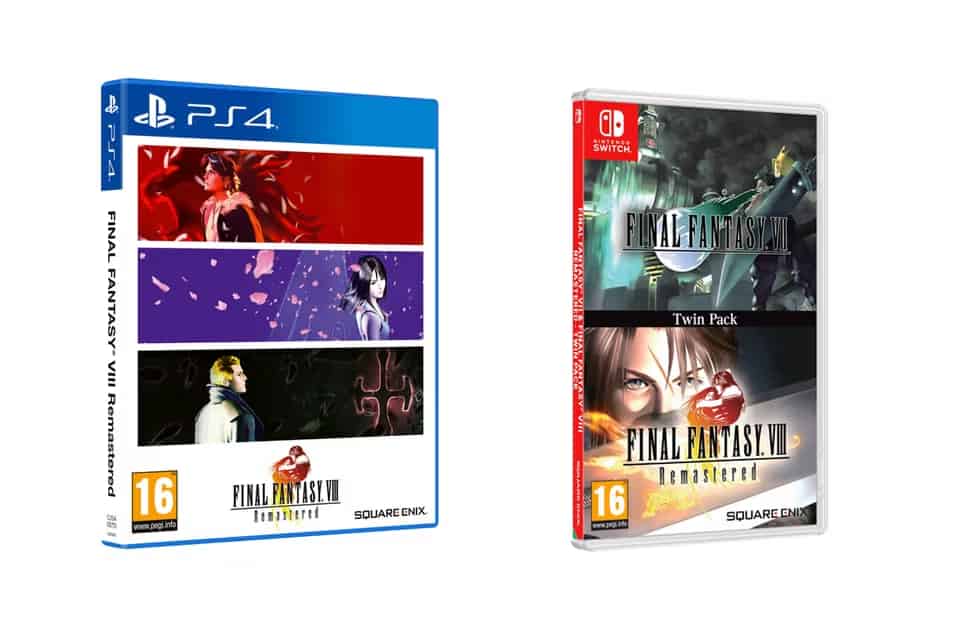
After releasing remasters of both Final Fantasy VII and Final Fantasy IX on modern consoles, Square Enix finally released Final Fantasy VIII Remastered for PlayStation 4, Xbox One, Nintendo Switch, and Steam. This new version is a separate release from the 2013 Steam version, and Steam users have the option to select either version (note that the remaster retails for $19.99 while the original Steam release is $11.99). The remaster of Final Fantasy VIII also made its way to iOS and Android mobile storefronts in the spring of 2021. This version of the PS1 classic is what many consider to be its “definitive” release, not only thanks to the improvements made to the visuals, performance, and gameplay, but for how readily available it is across multiple platforms after years of languishing in Square’s back catalog.
Some of the mroe notable changes and differences in the remaster versus the original version of Final Fantasy VIII include:
- The remaster’s Steam version runs at up to 4K resolution in the 4:3 aspect ratio, but the original’s Magic Booster feature is no longer present.
- All 3D character models and assets (including environments, weapons, enemies, and world map locations) are all re-textured and more detailed, and these graphical improvements go so far as to include brand-new faces and hair on most of the main cast.
- The Guardian Forces appear in much greater detail, with several of their features much more prominent and noticeable when calling upon them in battle. Their portraits in the game’s menus also appear in much more detail.
- Spells have improvements made to their animations and effects when casting.
- Menu text and dialogue feature a new font/typeface.
- Issues with slowdown and other performance hiccups are now gone.
- The remaster uses the original music from the PlayStation release instead of the MIDI versions of the soundtrack from the original PC release.
- The console versions feature three in-game “boosts” to assist with gameplay: Battle Enhancement (Max HP, Always on Limit Break, Max ATB gauge), No Random Encounters, and Speed Boost (x3)
- The Steam version introduces several new cheats exclusive to its release, and activating these disables achievements:
– Obtain all Items
– Obtain all Abilities
– Max GF Levels and AP
– Max Gil
– All Magic at Max (100)
– Obtain all Limit Breaks
– Obtain all Cards
